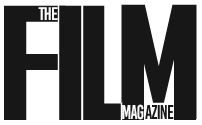10 Best Blade Runner Moments
8. Spinner Flight

There are justifiable claims to be made that Blade Runner is a slow film. Despite the gunshots and chases, they’re not massively long sequences, and not massively explosive. It’s certainly not an action film. And occasionally, with an eye on aesthetics and making the world of 2019 Los Angeles as much of a character as any of those inhabiting it, Scott takes a few moments to show it off rather than advance the plot. The initial flight to the Police Station in the spinner, Deckard still eating his noodles, is one of those examples.
It’s an astonishing feat of filmmaking, with everything practical (though composited digitally), and with no CGI involved. As a result, anyone with a keen eye watching the spinner’s descent to the police station will note the outline of Harrison Ford’s own Millennium Falcon from Star Wars, and the police building itself is the outside of the mothership from Close Encounters of the Third Kind. The lighting, the design of the spinner’s interior, the music, all comes together to hide the true identities of these buildings, and transports us in a moment of pure science-fiction fantasy to sheer wonder at these buildings built up to the sky, shining in the dark. There are other moments where the world of the film is the focus, but this is surely the best, and has inspired an entire generation of filmmakers, architects, and visual artists. It would be impossible to think of a cyberpunk cityscape design without Blade Runner’s LA, and this sequence shows it off wonderfully.
Recommended for you: Six Decades of Steven Spielberg
7. What’s a Tortoise?

After our introductory shots to the film, we arrive inside the Tyrell Corporation building. Everyone wanting to work there must be screened, and they use a little machine with an eye scanner and a polygraph while they ask some questions. It’s designed to provoke an emotional response, and do that it most certainly does, with a strange man seemingly more and more rattled by the questions.
From the cinematography of the interior’s opening shot, fan rotating and strong noir lighting, the scene establishes us firmly in the neo-noir territory that it will remain in generically for its story length. It establishes the VK test, gives us a glimpse of one of our villains, and through its questions sets up its themes. When a question about a tortoise is asked, the man, Leon, asks what a tortoise is. The interrogator, Holden, says it’s the same thing as a turtle. This, biologically, is not true, but subtly here is our introduction to the key theme: two things which are not the same can, sometimes, be indistinguishable from one another. Boundaries blur. Humans and replicants blur together. The world is confusing, life is sometimes not what it appears to be. What brings the scene crashing down is, in the end, a question about a mother bringing life, and a murder, death. To be born is to be consigned to die.
6. Crashing Glass

By the halfway point in the film, we have seen quite a bit of Deckard doing detective work, but a gun hasn’t been fired in anger since the opening scene. How can we have our neo-noir thriller without a blaster going off? Well, Deckard manages to track down Zhora, one of the replicants, and after a chase through the streets, he fires off a few shots. She crashes through panes of glass, stumbling, fake snow in her hair, and finally falls to the ground dead.
The most shocking thing about the scene (aside from a shot of a very badly made-up stunt double) is how genuinely beautiful it is. Compared to Pris’s screeching, Leon’s silent gunshot, and Roy’s philosophical soliloquy, Ridley Scott makes Zhora go out in a shower of light and colour; slow motion punctuated by loud blasts from Deckard’s gun. Almost every shot is a barrage of neon colour and light. Zhora finally lies face down on the ground, and Scott scatters large shards of glass around her to reflect the lights of the city. Not only is it a hauntingly beautiful shot, but it perhaps shows once more that the city, humankind striving to prove their own greatness, is all around, and takes out even our own creations. The city has judged Zhora, just wanting to live, to be a hazard and not a benefit, and has executed her accordingly.

